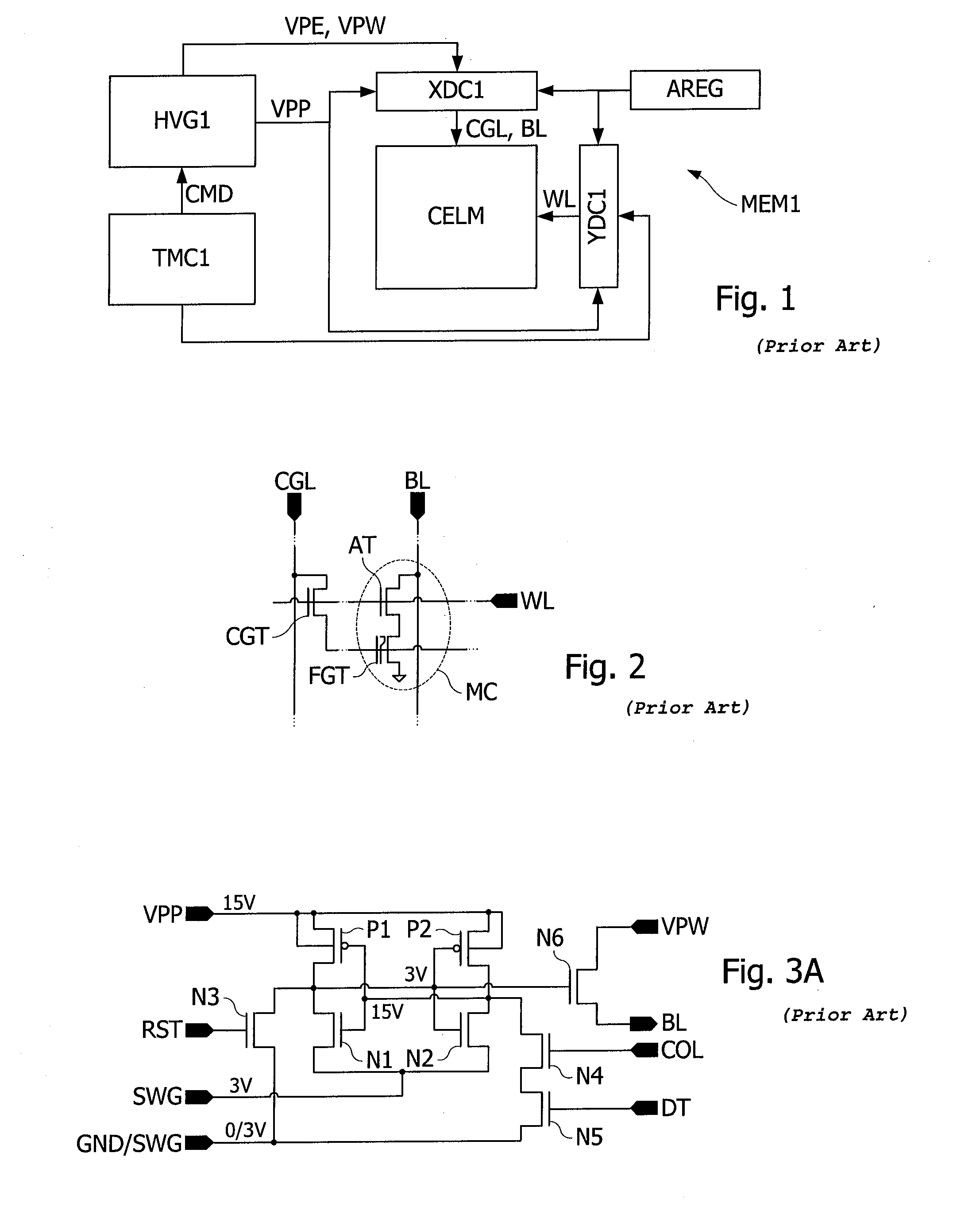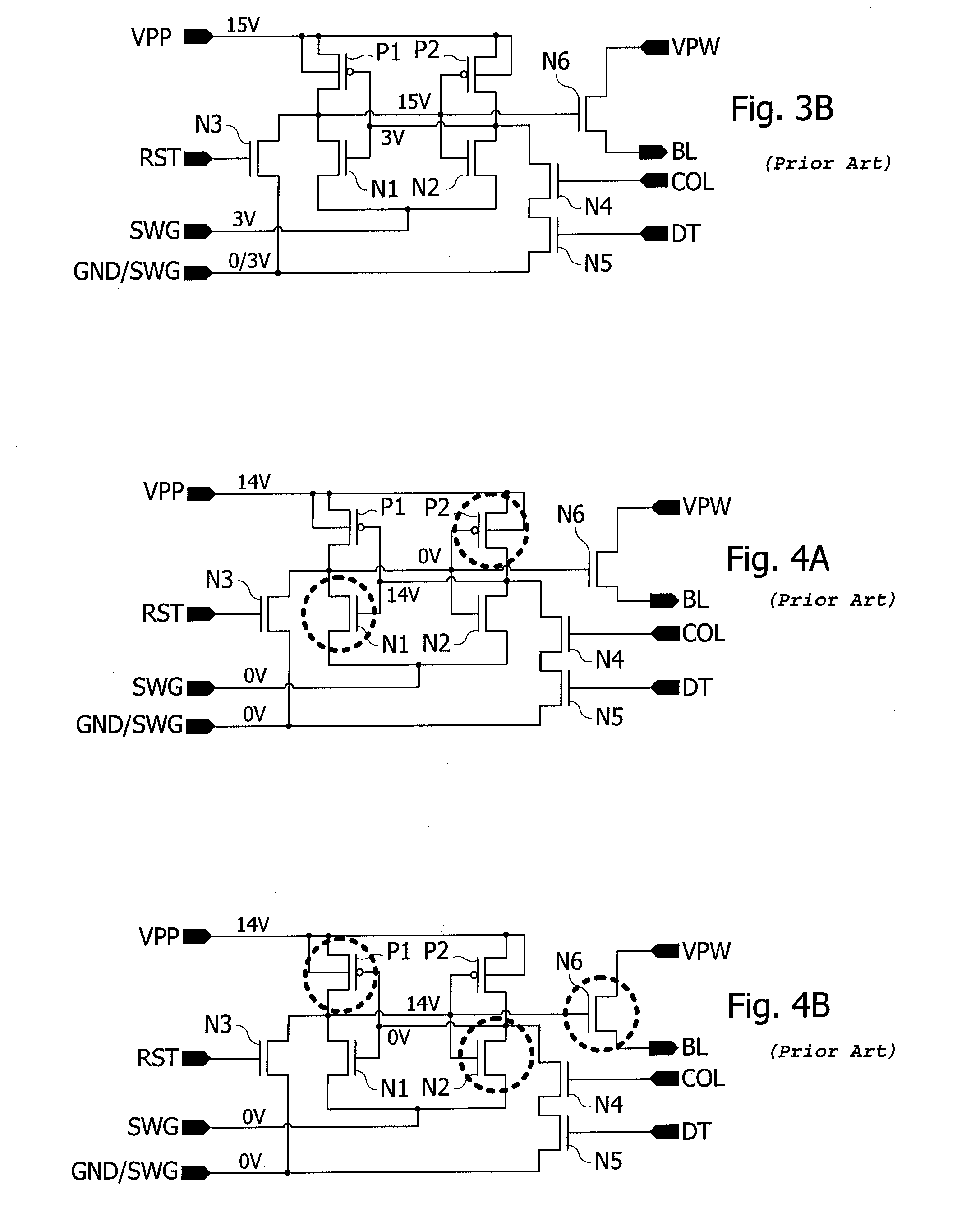Method of burn-in test of eeprom or flash memories
a technology of flash memory and burn-in test, which is applied in the direction of read-only memories, instruments, and static storage, etc., can solve the problems of increasing the failure rate, the voltage swg may not be higher, and the gate oxide breakdown of transistors, etc., to avoid programming non-addressed memory cells. , to achieve the effect of increasing the tim
- Summary
- Abstract
- Description
- Claims
- Application Information
AI Technical Summary
Benefits of technology
Problems solved by technology
Method used
Image
Examples
Embodiment Construction
[0043]FIG. 5 shows an EEPROM memory referred to as MEM, according to one embodiment. Memory MEM comprises a memory array CELM comprising memory cells distributed into lines and columns transverse to lines. Line YDEC and column XDEC decoders allow one or more words comprising several memory cells of a same line to be selected. Decoders XDEC, YDEC are controlled by an address register AREG allowing a word at the intersection of a line and a group of columns to be selected. A high voltage generation circuit VPGN supplies a high voltage VPP and voltages VPE, VPW to decoder XDEC. Decoders XDEC, YDEC control memory cells for reading, programming or erasing by providing adapted voltages, to bit lines BL, and gate control lines CGL for decoder XDEC, and word lines WL for decoder YDEC. A mode control circuit TMCL transmits a control signal CMD to the circuit HVGN to activate a burn-in test mode or a normal operating mode of the memory.
[0044]According to one embodiment, the memory MEM is modi...
PUM
 Login to view more
Login to view more Abstract
Description
Claims
Application Information
 Login to view more
Login to view more - R&D Engineer
- R&D Manager
- IP Professional
- Industry Leading Data Capabilities
- Powerful AI technology
- Patent DNA Extraction
Browse by: Latest US Patents, China's latest patents, Technical Efficacy Thesaurus, Application Domain, Technology Topic.
© 2024 PatSnap. All rights reserved.Legal|Privacy policy|Modern Slavery Act Transparency Statement|Sitemap



